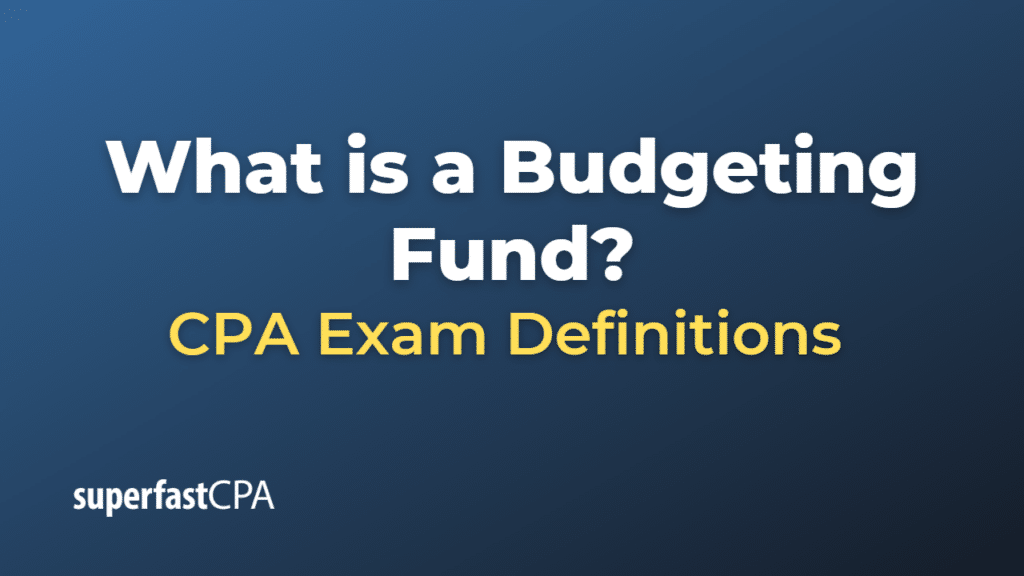Budgeting Fund
A budgeting fund, also known as a sinking fund, is a financial strategy used by individuals or organizations to save money for a specific purpose or large expense over a period of time. The primary goal of a budgeting fund is to allocate a portion of income or revenue periodically (e.g., monthly, quarterly) into a separate account or fund, to cover a future expense or financial goal without resorting to borrowing or using other financial resources.
For example, a company might create a budgeting fund to save for equipment upgrades or a building expansion, while individuals might use a sinking fund to save for a vacation, home repairs, or an emergency fund.
By creating a budgeting fund, individuals and organizations can better manage their finances, plan for future expenses, and avoid financial stress associated with large, unexpected costs. This strategy promotes disciplined savings, financial responsibility, and long-term financial stability.
Example of a Budgeting Fund
Let’s consider an example involving an individual who wants to create a budgeting fund for a specific purpose.
Scenario: John wants to buy a new car in two years, and he estimates the car will cost $12,000. To avoid taking out a loan, he decides to create a budgeting fund to save the required amount.
Step 1: Determine the time frame and amount needed
John has two years to save $12,000 for the car.
Step 2: Calculate the monthly savings required
To determine how much John needs to save each month, he divides the total amount needed ($12,000) by the number of months in his time frame (24 months):
$12,000 / 24 months = $500 per month
Step 3: Set up a separate savings account or fund
John opens a separate high-yield savings account specifically for his car budgeting fund. This helps him avoid mixing these funds with his regular savings or daily expenses.
Step 4: Allocate the required amount to the budgeting fund each month
John makes a monthly deposit of $500 into his car budgeting fund. He sets up an automatic transfer from his checking account to the savings account to ensure he consistently saves each month.
Step 5: Monitor progress and adjust as needed
John regularly checks his car budgeting fund to ensure he’s on track to meet his goal. If his financial situation changes, he can adjust the amount he saves or the time frame for his goal.
After 24 months, John’s car budgeting fund has reached $12,000, allowing him to purchase the new car without taking out a loan or incurring debt. By using a budgeting fund, John effectively planned for a significant expense and maintained financial stability.













